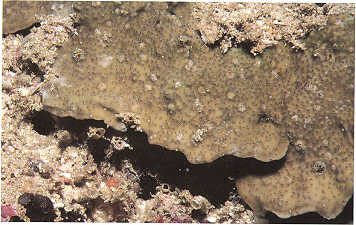
Plate 16. Thorn Coral (Stylocoeniella guntheri).
Descriptions of Oman Corals and Their Habitats
A Note About Names
The common English names of corals and other organisms usually are based on an obvious physical characteristic which might be similar to another object with which the layman may already be familiar, e. g. Cauliflower Coral, which superficially looks like a cauliflower. However such familiar names may not adequately define a given species; because other closely related species may share such a characteristic. For naming organisms more precisely biologists use something called the binomial system, first used by the great biologist Carl von Linne (Linneaus), who developed the systematic naming and description of animals and plants in the eighteenth century. This system of naming involves an italicized or underlined genus name followed by a species name for every organism, e. g. Pocillopora damicomis. Such names may be changed if a subsequent biologist decides that the species should be grouped with another previously described species, or if he decides that a specimen is sufficiently different to warrant identifying it as a new and separate species. These rather confusing issues are only resolved by specialists in the field, but the intention is that any identified and described species should be genetically separate and distinct from all others.
Most books which are directed to non-specialists
use only common or descriptive names, or scientific identifications go
only to the genus level. In order to educate and provide more of
the available information available for a coral type, this book will use
both common English names that have been used in previous publications
on Oman corals, and identifications to species where these can be
accurately made. Where a species may be in some doubt the term cf. will
be used, e. g. Porites cf. compressa,
and where
the species is unidentified but the genus known, the genus name will be
followed by sp., e. g. Goniopora sp.
Oman Hard Corals and their Habitats
Phylum Cnidaria (Coelenterata)
Class Zoantharia
Order Scleractinia
Family Astrocoeniidae
Scientific Name
Stylocoeniella
guntheri
Common Name "Thorn Coral"
Color Greenish brown to dark brown, with white to reddish
brown polyps.

Plate 16. Thorn Coral (Stylocoeniella guntheri).
Distinguishing Characteristics
Thorn coral usually exists as quite small, nondescript
encrustations on the bottom which are easily overlooked. Its most
characteristicfeature is small, thorn-like projections that lie between
closely spaced calyces which are only 8-10 mm in diameter and less than
5 mm apart. The spiny projections give the coral a rough sandpapery surface,
especially in the cleaned skeletons.
Habitat
This species is encountered across a wide depth range
and conditions of wave exposure and turbidity.
Family Pocilloporidae
Scientific Name Pocillopora damicomis
Common Name "Cauliflower Coral"
Color Usually reddish brown to dark brown, sometimes
greenish brown.
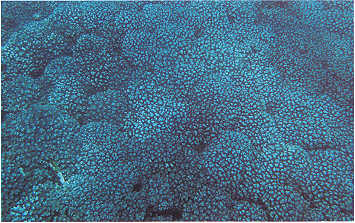
Distinguishing Characteristics
Individual colonies of this species grow as small and
bushy coral heads. but many colonies may grow together in wave protected
areas to form extensive monospecific fringing reefs made of this fast growing
species. The coral is highly branching and its branches are usually thin
and quite delicate when the coral is growing in quiet, wave protected areas.
However, growth form is highly variable, and branches can grow to be much
thicker and more robust on corals living in more wave exposed areas where
they must withstand turbulence. The coral's calyces are small, less than
1 mm in diameter, and the ends of its branches divide into small sub-branches
that appear knobby or club-like. Often a branch will show an enlarged,
fan-like
shape which marks the home of a resident symbiotic crab which lives within
the coral's skeleton.
Other colorful symbiotic crabs and shrimp
live in mating pairs within the spaces among the coral branches
which form a complex internal space that provides both a protective habitat
and food from mucus produced by the coral.
Habitat
Cauliflower coral can thrive in a variety of environments,
but it is most abundant in bays such as Bandar Jissah and Bandar Khayran
or in shallow water along wave protected sides of islands where
it may grow in large monospecific stands many tens of meters in
area and a few meters thick.
Miscellaneous
This was the first coral species to have been named and
described by Linaeus in 1758, and it is one of the most widely distributed
species in the world. It is found throughout the tropical Indo-Pacific,
all the way from the Red Sea Coast of Africa to the west coast of
Panama in Central America. It was the dominant coral species in these regions,
forming large, monospecific stands similar to the kind we see in
Oman today. However, the El Nino warming of 1982-1983 induced mass mortality
in the Panama populations of this species.
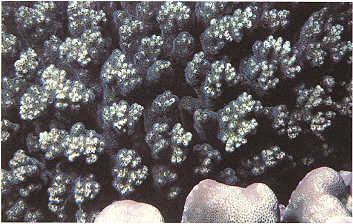
Scientific Name Stylophora
pistillata
Common Name "Hood Coral"
Color Pale to medium brown.
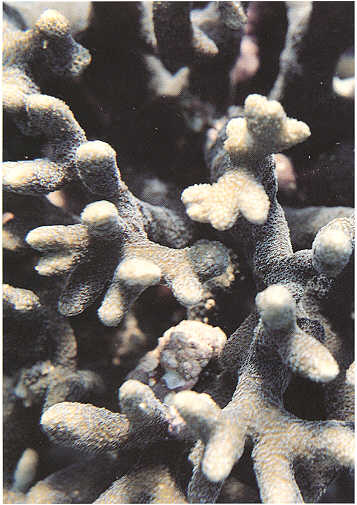
Plate 19. Close up of Stylophora pistillata showing partly expanded polyps in hooded calyces.
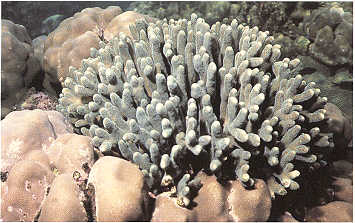
Plate 20. Hood Coral (Stylophora pistillata)
growing on colony of Hump Coral (Porites lutea).
Distinguishing Characteristics
Colonies are usually small ( 10-15 cm diameter) and branching,
with branches about 1 mm thick, sometimes bifurcated into small club-like
ends which mark a new branching point. Calyces are about 1 mm in diameter
and each calyx is partly bordered by a small hood which is the source of
this species' common name. The coral's skeleton is dense and heavy, and
therefore capable of resisting strong wave action. This species also plays
host to a complement of symbiotic crabs and shrimp, similar to Cauliflower
Coral.
Habitat
Hood Coral is found to depths of 50 m and under a variety
of environmental conditions, but it is most common in shallow areas.
It may live in areas with extreme turbidity such as on mangrove roots,
and it is one of the most resistant of corals to various physical
stresses. It may be the dominant species on shallow reefs that are periodically
exposed to changes in temperature or salinity. It has a high reproductive
potential, which enables it to rapidly colonize areas where most other
species may be killed or unable to compete.
Family Acroporidae
Scientific Name Acropora
clathrata
Common Name "Table Coral"
Color Pale to medium reddish brown.
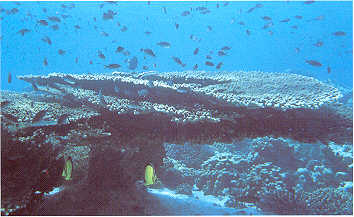
Distinguishing Characteristics
This is one of the dominant species in Oman of the very
diverse family Acroporidae, which has over 200 recognized species. Branches
of Acropora species have an nearly colorless apical polyp
on the branch end that is the most rapidly growing part of the colony with
slower growing lateral polyps future back on the branch. Calyces of this
species look like numerous small tubes or ear-like projections from the
coral branch. Small colonies of A. clathrata may appear fan-like
with lacy branches. As these grow they form large tables which range up
to 3 m in diameter. Smaller tables show numerous branches and sub-branches
which, as the table grows, coalesce to form solid plates. Branchlets of
large tables almost never turn upward but remain in the plane of the plate
which forms the table. Large tables on wave exposed coastlines are extremely
robust and dense, unlike most members of this family. which have porous
and delicate skeletons.
Habitat
This species occurs in almost all areas which support
reef corals in Oman, from the most protected bays to the most exposed coasts,
where large, very dense and strong tables may be the dominant coral. Table
corals, like most other members of this family, grow very fast and can
establish monospecific reefs like Cauliflower Coral, often in the same
immediate area.
Scientific Name
Acropora
valenciennesi
Common Name "Table Coral"
Color Pale to medium reddish brown.
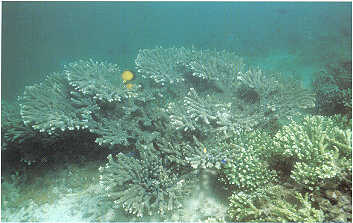
Distinguishing Characteristics
This species is similar to Acropora clathrata,but
is more loosely branched and its branches do not coalesce into plates as
the coral grows larger. Branch ends may curve upward instead of remaining
in the same plane of the table top. Lateral calyces are neatly arranged
in rows along the sides of branches.
Habitat
Acropora valenciennesi,
similar to Acropora
clathrata, is found mostly between 5 and 20 m deep in sheltered
areas.
Scientific Name Acropora
valida
Common Name "Bush Coral"
Color Pale to medium brown, sometimes with
overtones of green, blue or pink.
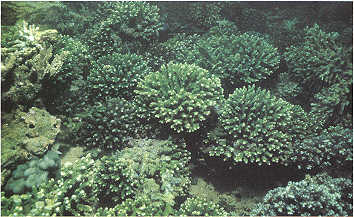
Plate 23. Colonies of Bush Coral (Acropora valida).
Distinguishing Characteristics
This is the second most abundant Acropora species
present in Oman. It usually appears in groups of small, bushy colonies
each about 10-20 cm diameter with pale or colorless, terminal polyps. It
often forms thickets composed of this single species in the same areas
as Acropora clathrata.
Habitat
This species usually exists in sandy areas in sheltered
embayments where it may be a dominant species in clear to turbid water
conditions. It is the most common Acropora species in the
world and is found from the Red Sea to the west coast of Central America,
suggesting that it can thrive in a variety of environmental conditions.
Like many other species of bush-like Acropora, this species
provides food and habitat for a group of colorful symbiotic crabs
similar to those that inhabit Cauliflower Coral and Hood Coral.
Scientific Name
Montipora
aequituberculata
Common Name "Encrusting Pore Coral"
Color Tan to pinkish brown.
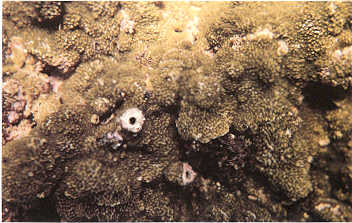
Plate 24. Close up of Encrusting Pore Coral (Montipora
aequituberculata).
Distinguishing Characteristics
The calyces of this coral are minute, 0.5 mm or less,
and recessed within projections called papillae which surround and project
above the calyces and give the coral surface a grainy appearance, even
in live specimens. Adjacent papillae are sometimes fused. The growth form
is encrusting or plate forming but never branching, and colonies grow in
irregular shapes over areas up to 2 m in their longest dimension.
Habitat
This and other encrusting species of Montipora
are frequently found on upper reef slopes and sheltered areas and
can become more dominant in areas of moderate turbidity.
Scientific Name
Montipora
circumvallata
Common Name "Porous Leaf Coral"
Color Rich brown to pinkish brown.
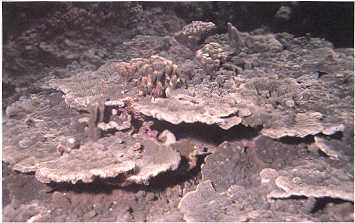
Distinguishing Characteristics
This species is in many respects similar to Cabbage Coral
in forming leafy plates and foliaceous growths. However, its growth
form is more variable than Cabbage Coral in that it may form fingers, small
spires and somewhat branching structures as well as simple encrustations,
all within the same colony. The calyces of its skeleton are small, about
5 mm in diameter, and do not align themselves in rows as in Cabbage Coral.
Small projections surround the calyces which give the surface of cleaned
skeletons a rough, grainy texture.
Habitat
This species is very common in embayments in the
Capital Area, where it is often the dominant form in turbid areas and may
monopolize many meters of the bottom as monospecific reefs. It is usually
seen in shallow water, often in sandy areas where no other corals occur.
Scientific Name Montipora
foliosa
Common Name "Cabbage Coral"
Color Rich brown to pinkish brown
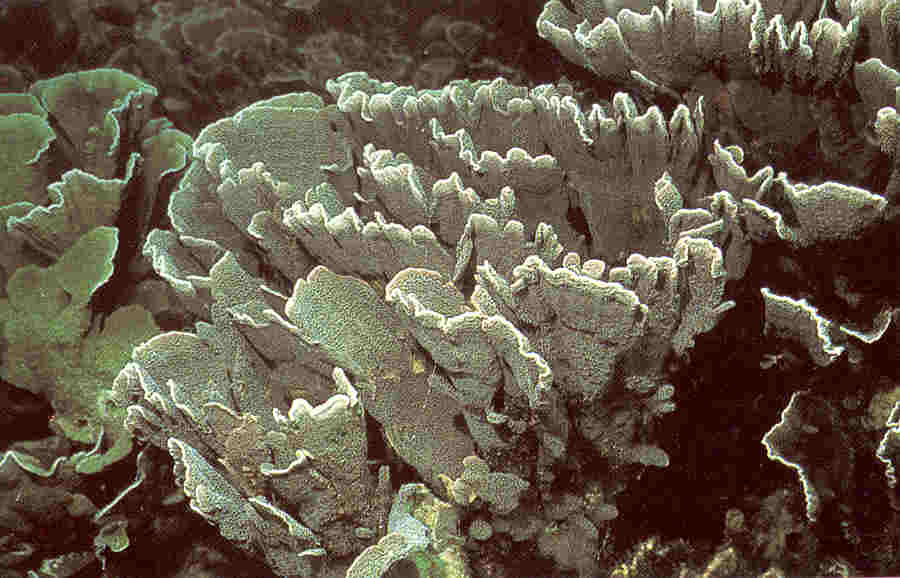
Plate 26. Cabbage Coral (Montipora foliosa)
showing highly foliaceous plate growth.
Distiguishing Characterstics
Cabbage Coral forms large encrusting colonies with leafy plates that may grow into large, beautiful reefs composed of this single species. Each plate may form the site of origin of many more plates and leaves as the colony grows. This species may completely dominate and overgrow an area with its beautiful formations. Calyces are tiny, almost pin prick size, and arranged in rows along ridges that radiate from the center of a growing plate to the plates margin.
This species can be extremely abundant in areas where
water is calm and relatively turbid. It is the most common coral on the
western side of Masirah Island and the southeast to southwest coasts of
Barr al Hikman, where its rapid growth forms the largest reefs along any
Oman coast. It is also common in embayments and sheltered waters from Musandam
to Dhofar.
Scientific Name
Astreopora
myriophthalma
Common Name "Porous Star Coral"
Color Creamy pale brown to medium brown.
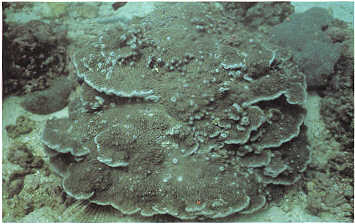
Plate 27. Colony of Porous Star Coral (Astreopora
myriophthalma).
Distinguishing Characteristics
This species is easily distinguished by the shape of
its calyces, which are 1-2 mm in diameter, raised like small cones above
the surface of the skeleton and are granulated and evenly spaced. The coral
colonies can vary in shape, from simple encrustations or lobes to heavy
branching forms which can be intricately formed, but colonies are always
robust and strong. The skeleton is much denser than most of the other members
of the Acroporidae family.
Habitat
Astreopora myriophthalma
is wide spread
from the Red Sea to the Tuamotus in the South Pacific, in all types of
habitats and depths where turbidity is not high. In Oman this species is
commonly found in areas of moderate to high wave turbulence.
Family Poritidae
Scientific Name Porites cf.compressa
Common Name "Finger Coral"
Color Pale green to olive green.
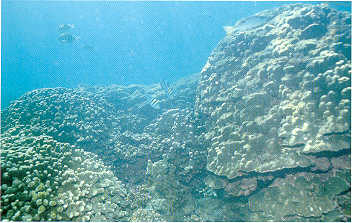
Distinguishing Characteristics
This species is highly branched but unlike Cauliflower
Coral and Hood Coral the calyces, which are about 1.5 mm in diameter, are
shallow and the coral surface is nearly smooth. The branches average about
1.5 cm thick and are fused at their bases into a massive trunk. This is
the only distinctly branching species of Porites in Oman.
Habitat
This species is almost always found in embayments where
it may form monospecific stands and fringing reefs similar to those formed
by Pocillopora damicomis. It is relatively tolerant of turbidity.
sedimentation and reduced salinity and therefore is likely to dominate
in those areas closest to freshwater runoff.
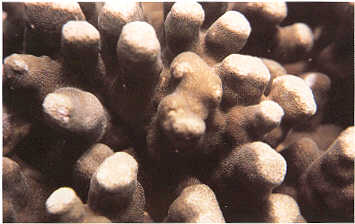
Plate 29. Close up of Finger Coral (Porites compressa).
Miscellaneous
This species was first described from specimens obtained
in Hawaii and has been reported at very few locations other than Hawaii
and the coasts of Arabia. It is the dominant species on the nearshore reefs
of the northern Arabian Gulf where it appears to be the coral that is the
most adapted to low winter water temperatures of this area.
Scientific Name Porites
lutea
Common Name "Hump Coral"
Color Green to greenish brown.
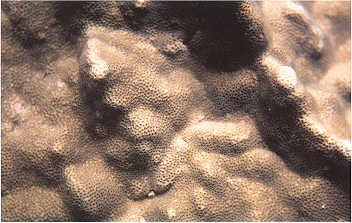
Plate 30. Close up of Hump Coral (Porites lutea).
Distinguishing Characteristics
This species has similar calyces as Porites compressa,
but it grows as massive colonies without distinct branching. Its primary
growth form is hemispherical. up to many meters in diameter, but in bays
or areas with sediment input it may grow in thick columnar shapes. It forms
large, nearly monospecific reefs, such as can be seen in Cemetery Bay at
Muscat. Although its growth rate is relatively slow, a single coral colony
can grow for many hundreds to a thousand years, and its growth will crowd
out other species when environmental conditions are stable over long time
periods.
Habitat:
Although this species may grow along wave exposed open
coastlines, in Oman, Hump Coral is most common and most dominant in wave
protected shores and embayments where it forms massive reefs in similar
locations as Porites compressa and Pocillopora damicomis.
In
these areas individual colonies often exceed 5 m in diameter, representing
hundreds of years of continuous growth.
Scientific Name Goniopora
sp.
Common Name "Daisy Coral"
Color Green to gray-green.
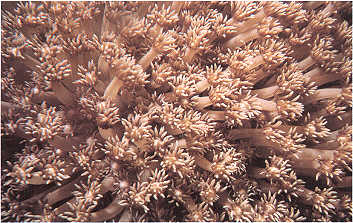
Plate 31. Close up of expanded polyps of Daisy Coral
(Goniopora sp).
Distinguishing Characteristics
This genus is easily recognized from its highly expanded
flower-like polyps which project several centimeters above the coral's
skeleton, waving back and forth with each passing current or wave. When
disturbed, the polyps will be retracted and show a smooth coral surface,
but often polyps can not be pulled completely into the calyx and are easily
detached from the corals surface. Unlike most corals, this species usually
has its polyps highly extended during the day. The skeleton of individual
coral is massive but usually smaller than 1 m diameter, with larger, deeper
set calyces than Porites species. It can assume a variety
of growth forms, from massive or columnar, to highly irregular shapes.
Habitat
This species grows at a variety of depths and conditions
of wave exposure, but is most common in quiet water in embayments. Like
its close relatives the Porites, it often forms large monospecific
stands in protected areas.
Family Siderastreidae
Scientific Name
Siderastrea
savigniyana
Common Name "African Pillow Coral"
Color Creamy white with pale brown centers.
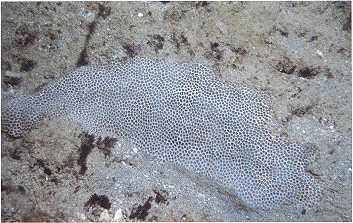
Plate 32. Colony of African Pillow Coral (Siderastrea
savigniyana).
Distinguishing Characteristics
This coral forms small colonies that are slightly rounded
or flat encrustastions on the the bottom. Its calyces are polygonal, about
3 mm in diameter and separated by broad walls which appear much paler than
the tissue in the polyps of the live specimens. Many of the calyces in
cleaned skeletons show fusion of three or four adjacent septa, resulting
in fewer septa reaching the center of the calyx than are at its perimeter.
Habitat
This species is almost always in areas where a thin layer
of sand covers the hard bottom and probably inhibits the settlement and
growth of species more sensitive to sedimentation and scour. Therefore,
this coral may be common in sedimented embayments and at the bottom of
steep coral covered slopes, but it never occupies more than a small portion
of the bottom. Specimens are always small, usually less than 20 cm in their
largest dimension.
Scientific Name
Pseudosiderastrea
tayami
Common Name "False Pillow Coral"
Color Pale brown with white polyp walls.
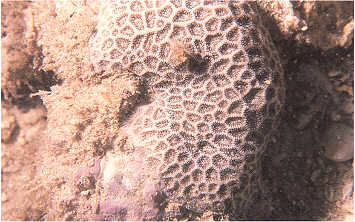
Plate 33. Colony of False Pillow Coral (Pseudosiderastrea
tayami).
Distinguishing Characteristics
False Pillow Coral is found in the same areas as the
African Pillow Coral which it resembles. The present species has polygonal
calyces 3-6 mm in diameter with distinct,
narrow wallswhich are
usually much fighter in color than the polyp centers. Its evenly spaced
septa have fine teeth and fuse together in fan shapes. Coloniesare
usually small and encrusting or convex.
Habitat
The usual habitat for False Pillow Coral is on or at
the base of reef slopes in calm water.
Scientific Name
Anomastraea
irregularis
Common Name "Crisp Pillow Coral"
Color Pale brown.
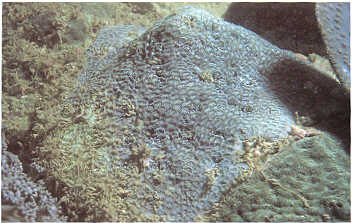
Plate 34. Colony of Crisp Pillow Coral (Anaomastrea
irregularis)
Distinguishing Characteristics
Colonies of this species are small and usually
humped or conical, rising 10 to 20 cm above the hard bottom. The
coral surface is smooth, with calyces 3-5 mm diameter, irregularly shaped
and with walls shared between adjacent calyces. Septa are numerous and
are densely packed within the calyces, and they angle steeply into the
calycal centers.
Habitat
This species is most common at the bases of reefs in
turbid, sandy environments where there is good water movement. Itis most
common in the northern Arabian Gulf and, therefore, appears to be adapted
to withstand cold temperatures. Although it is not found in the Red Sea,
its only other occurrence worldwide is on the east coast of Africa west
of Madagascar, again in a low temperature region.
Scientific Name Psammocora
contigua
Common Name "Branched Sandpaper Coral"
Color Pale to dark brown or gray.
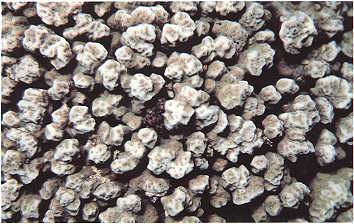
Plate 35. Close up of Branched Sandpaper Coral (Psammocora
contigua).
Distinguishing Characteristics
The branches of this coral are thick and flattened at
the ends, giving a somewhat club shaped appearance. The common name is
derived from its coarse, sandpapery surface, most apparent in the cleaned
specimen, but which shows even in the tissue covered live coral. This texture
results from the porous nature of the coral skeleton, and its calyces and
septa are rather sparse and indistinct among the skeletal pores.
Habitat
This species grows to a height of about 10 cm above the
reef surface and is almost always found in shallow water, usually in areas
of moderate to high turbidity and sedimentation which may restrict other
species. It is often the coral growing nearest the shoreline, indicating
the resistance of this species to physical stresses.
Scientific NamePsammocora
cf.
haimeana
Common Name "Encrusting Sandpaper Coral"
Color Brown or gray.
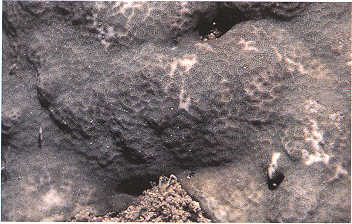
Plate 36. Close up of Encrusting Sandpaper Coral (Psammocora
cf.
haimeana).
Distinguishing Characteristics
The coarse, sandpapery surface of this species is very
similar to that of branching sandpaper coral and calices are approximately
the same size. Also, the prominant septa in calyces for both species are
thickened toward calyx perimeters, giving the septa the appearance of flower
petals. The primary difference between the two species is that this one
does not form branches. Instead, the coral is encrusting or slightly
lobate, with the calyces lying in slight depressions or short meandering
valleys.
Habitat
This species grows at intermediate depths in clear to
turbid water conditions. It is inconspicuous and may dwell in depressions
or recessed areas in the reef substratum.
Scientific Name Coscinarea
monile
Common Name "Wrinkle Coral"
Color Brown to pale brown in calyces, with lighter coloron
septal ridges.
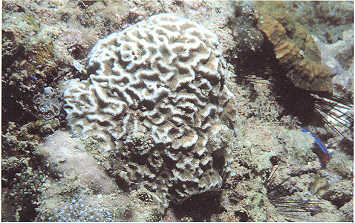
Plate 37. Wrinkle Coral (Coscinarea monile).
Distinguishing Characteristics
This coral appears to have some of the characteristics
of the brain corals described below, i.e. meandering continuous valleys
of polyp mouths within the same tentacular ring which gives the appearance
of a brain surface. On closer inspection however, it can be seen that the
adjacent calyces of this species are more distinctly separated than in
the brain corals, and that the brain-like appearance results from alignment
of septa between adjacent calyces. The calyx diameter of up to 7
mm is the largest of any species in this family, and walls and septa are
thick. The coral generally grows as small hemispherical colonies and is
usually a minor, although common component of the total coral cover in
Oman.
Habitat
This species favors turbid water and low temperatures
is in a variety of habitats from shallow subtidal to 50 m depth. It is
most abundant where cold water conditions periodically prevail. such as
in the northern Arabian Gulf and in areas of cold upwelling on the Dhofar
coast. In Australia this genus is not encountered in tropical areas,
but is restricted to southern temperate waters.
Family Pavonidae
Scientific Names Pavona
cactus and Pavona decussata
Common Name "Leaf Corals"
Color Pale to dark brown, sometimes with greenish hue.
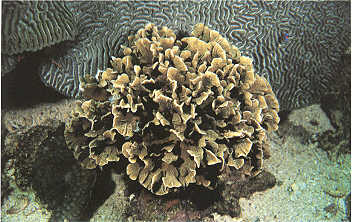
Distinguishing Characteristics
These two species are similar enough to suggest that
they might be different growth forms of the same species. However, they
can be differentiated on the basis of the thickness of their distinctive
leaf-Iike structures and the sizes of their calyces. Both form vertical,
irregular leaves that appear as sinuous, sometimes delicate, flower-like
petals. The septa of the small calyces extend over the tops of the leaves,
giving them a finely serrated appearance. This delicate structure is most
developed in Pavona cactus, which has thin leaves no more
than 5 mm thick and smaller calyx diameters of less than 1 mm. In deeper
quiet waters up to 10 m depth this form can be very abundant on reef slopes
and have a very fragile growth form. Pavona decussata, which
is more common in shallow areas, is more robust in appearance, has thicker
leaves up to 10 mm thick and calyx diameters up to 3 mm.
Habitat
Both species are common in sheltered quiet waters, either
in shallow bays and lagoons or on reef slopes below the zone of active
wave action. They appear to compete best against other species when water
is moderately turbid and subject to sedimentation.
Scientific Name Pavona
explanulata
Common Name "Peacock Coral"
Color Various from gray. pink to purple. or brown to
green.
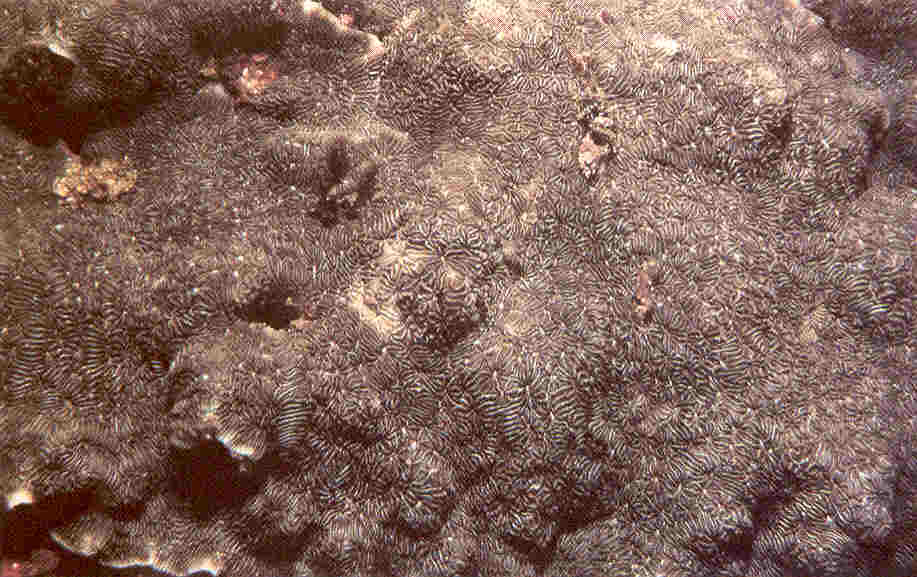
Plate 39. Close up of Peacock Coral (Pavona explanulata).
Distinguishing Characteristics
The coarse septa on this species extend between calyces
and alternate in thickness, giving a hash-marked appearance. This
structural detail may not be apparent when the polyps of the coral are
expanded. Leaves are seldom developed, and the coral is usually encrusting
with little relief, although rarely delicate, leaflike structures
can occur. Calyx diameter is 3-4 mm with variable separation between calyces
dependent on water depth and clarity.
Habitat
This ubiquitous species is usually found as a minor component
of the coral cover at a wide range of depths, light and environmental conditions
from Madagascar to the Philippines. It reaches its greatest abundance at
intermediate depths on reef slopes.
Scientific Name
Leptoseris
mycetoseroides
Common Name "Slender Lettuce Coral"
Color Mottled brown to green.
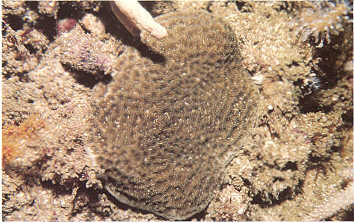
Plate 40. Slender Lettuce Coral (Leptoseris mysetoseroides)
Distinguishing Characteristics
This coral forms small encrusting colonies or foliose
leaves with various degrees of folding. The coral often has a delicate
brain-like appearance with the calyces lying within valleys formed by ridges
that may meander over the corals surface. The fine septa extend evenly
over the ridges between calyces
Habitat
The Slender Lettuce Coral is found in a variety of habitats
and depths, but primarily on steeply sloping walls in deep water, such
as Deep and Shallow Reefs near Al Fahl Island.
Family Fungiidae
Scientific Name
Cycloseris patelliformis
Common Name "Kneecap Coral"
Color Pale-brown to cream with possibly brown
perimeter.
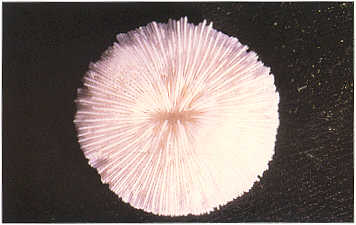
Plate 41. Kneecap Coral (Cycloseris patelliformis).
Distinguishing Characteristics
This coral and other members of its family are unique
in that a single polyp makes up the entire coral colony and the coral lives
with no attachment to the bottom. This means that the coral can live in
soft sand and is capable of limited movement by differential swelling of
its body. This coral is circular in shape, up to 4-5 cm in diameter
with the evenly spaced, prominent septa running in neat radii from the
central mouth area to the disk's perimeter. When tentacles are expanded
they protrude from between the septa at various distances from the polyp
mouth.
Habitat
This coral is extremely rare in Oman and thus far is
known only from one specimen collected near Marbat in Dhofar. Its primary
habitat is in the sand at intermediate depths outside of reefs.
Scientific Name Daseris
distorta
Common Name "Wedge Coral"
Color Brown to cream.
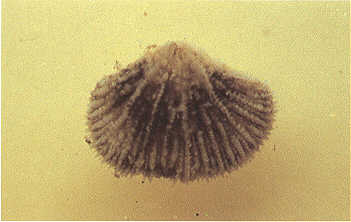
Plate 42. Wedge Coral (Diaseris distorta).
Distinguishing Characteristics
Appearing like a Kneecap Coral that has fragmented into
a number of fan-like wedges is an apt description for this small and easily
overlooked coral species. In fact, this fragmentation is how the wedges
are formed as the coral grows, with wedges having "radii" up to 7 crn and
thickly beaded septa. Short tentacles can protrude from between the septa
when the tentacles are expanded.
Habitat
This coral has been found thus far in Oman at only one
site. It is relatively abundant at about 20 m depth on a submarine ridge
that lies between Ras al Hamra and Fahl Island in the Capital Area. The
bottom at this location is light sand over calcareous rock and water is
usually turbid, conditions that are known to favor this species.
Miscellaneous
Despite Wedge Coral and Kneecap Coral having been
known to occur all the way from the Red Sea to Central America, this is
the first report of these two species from the family Fungiidae for Oman
waters.
Family Oculinidae
Scientific Name Galaxea
fascicularis
Common Name "Starburst Coral"
Color Usually brown with green protruding tentacles.
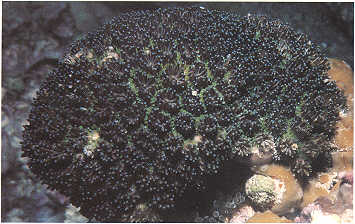
Plate 43. Sunburst Coral (Galaxea fascicularis)
showing partly expanded tentacles.
Distinguishing Characteristics:
This very beautiful coral is well described by its common
name, which can pertain to both the living coral and the cleaned skeleton.
The 3-5 mm diameter calyces are raised like pegs, up to 1 cm above the
coral surface, and the septa are thick and protuberant, giving the skeleton
the appearance of exploding aerial fireworks. Although this skeletal appearance
may be somewhat lessened by the presence of fleshy tissue on the live coral,
when the corals tentacles are expanded, the starburst effect is enhanced
by the appearance of the tentacles protruding out of each calyx. The coral
is usually encrusting but can develop branching or foliaceous growth forms.
Habitat
This species is relatively uncommon, and is found at
shallow depths under a variety of condition of water clarity. It forms
a large monospecific stand in the clear water of the Damaniyat Islands,
where it is relatively abundant compared to most areas.
Family Pectiniidae
Scientific NameEchinophyllia
aspera
Common Name "Flat Lettuce Coral"
Color Various from pale or red-brown to dark brown. sometimes
with green polyp centers.
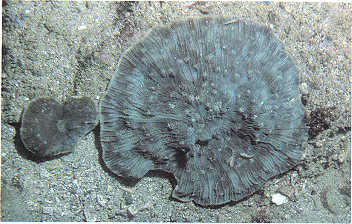
Plate 44. Flat lettuce Coral (Echinophyllia aspera).
Distinguishing Characteristics
This species grows as low lying plates or broad leaves
with free edges lying dose to the reef surface. Polyps are 1cm in diameter
and widely spaced on the coral's upper surface. Calyces may protrude well
above or lie even with the surface and calycal septa, and the surface
between the calyces is very spiny. Spines are coarse and sharp rather
than bead-like as in Hedgehog Coral. ,
Habitat
This species is usually found in mid to deep water on
or at the base of reef slopes, but may occur in shallow water under clear
conditions. It is a minor component of the coral community at many
sites in the Capital Area which have steep slopes and rich coral
coverage
such as at Al Fahl Island and at wave protected areas along the
shoreline from Bandar Khayran to As Sheik.
Scientific Name Oxypora
lacera
Common Name "Porous Lettuce Coral"
Color Gray green to pale brown
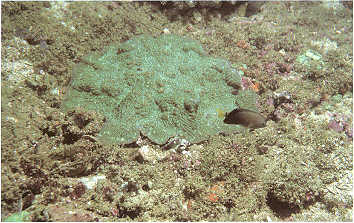
Plate 45. Porous lettuce coral (Oxypora lacera).
Distinguishing Characteristics
This species looks very similar in the field to its close
relative Flat Lettuce Coral, with spiny ridges on upper surfaces extending
between sparsely spaced calyces, usually on a flat, plate-like growth form.
The species differ primarily in the degree of protrusion of their calyces
above the coral surface and the spination of the ridges on the underside
of the coral. The calyces of Oxypora are smaller and protrude
less than
Echinophyllia, resulting in a smoother overall
coral surface with calyces less visible. The ridges on the Oxypora
lower surface are spiny, while those on Echinophyllia are
smooth.
Habitat:
Like Flat Lettuce Coral, this species usually occurs
in deeper water of 25 m or more in sheltered areas receiving little sedimentation
and limited currents.
Family Mussidae
Scientific Name Acanthastrea
echinata
Common Name "Starry Cup Coral"
Color Dark brown often with green polyp centers, sometimes
all greenish.
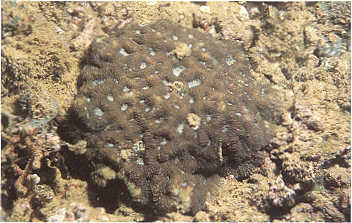
Plate 46. Starry Cup Coral
(Acanthastrea echinata)
Distinguishing Characteristics
The calyces of this species are variable with diameters
of 1 to 3 cm and are irregular in shape. The species is best distinguished
by the pronounced spines on the skeletal septa, which are usually quite
visible even through the thick tissues of the live specimen and are the
most apparent characteristic on the cleaned skeleton. These spiny septa
continue as toothed ridges across the walls which are shared between calyces.
When retracted the fleshy polyps show thick concentric folds.
Habitat
The coral colony usually grows as small hemispheres or
encrustations on the reef surface or in crevices and under ledges. It is
common over a full range of depths and environmental conditions down to
30 m and is tolerant of turbid water conditions.
Scientific Name Acanthastrea
maxima
Common Name "Fleshy Artichoke Coral"
Color Dark brown or green.
Distinguishing Characteristics
Like the starry cup coral, heavy septal spines are the
dominant characteristic of this species. However, the diameters of its
calyces are much larger, up to 5 cm, and polyps may expand to twice this
diameter. This species is endemic to Oman, meaning that it has been encountered
in only Oman waters, having been described from a specimen first found
off Ras al Hamra.
Habitat
Thus far, fleshy artichoke coral is very uncommon
and has only been collected from the ridge area lying between Ras al Hamra
and Al Fahl Island in the Muscat area, and in the nearshore waters at Sahd,
Dhofar. It appears to be favored by relatively low light and high
turbidity conditions that are present over sandy bottoms where most other
coral species are not abundant.
Scientific Name Blastomussa
merleti
Common Name "Branched Cup Coral"
Color Highly variable, from reddish through greenish
brown or blue-gray.
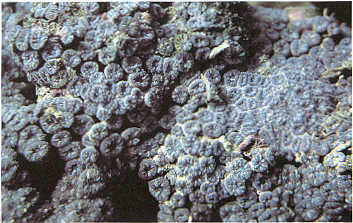
Plate 48. Branched Cup Coral (Blastomussa merleti).
Distinguishing Characteristics
When this species has its fleshy polyps expanded, it
resembles a colonial anemone growing on the reef surface. Causing the polyps
to retract reveals separate or nearly separate 1 cm diameter calyces on
stalks up to 3 cm long with no tissue on their bases. Septa within the
calyces are coarse and relatively few. Colonies are usually small and infrequently
found.
Habitat
The Branched Cup Coral is usually seen in deeper water
and in cracks and crevices on the reef slope. It is less common in shallow
areas and in areas of high coral cover and diversity such as Al Fahl Island
and Bandar Khayran to As Sheik.
Scientific Name Symphyllia
radians
Common Name "Greater Brain Coral"
Color Dark brown. .
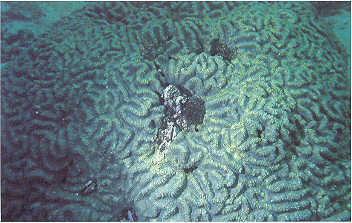
Plate 49. Greater Brain Coral (Symphyllia radians)
Distinguishing Characteristics
This species is similar to Brain Coral in having a brain
like appearance with the calyces as meandering valleys. However, these
valleys are very much bigger in this species, with the width of valley
walls ranging 2 to 3 cm. The skeleton of this coral is massive and very
spiny, with large sharp spines projecting from along the ridge walls. However,
the spines may not show in live specimens because they are hidden by its
very fleshy polyps. Colonies may reach 2 m diameter but more often are
in the 0.5 to 1 m range.
Habitat
Although this species can be found in sheltered bays
and coastlines, it is more commonly seen in exposed offshore areas. With
its massive growth form it is well adapted to strong surf conditions. and
it therefore tends to dominate in the most turbulent areas.
Family Merulinidae
Scientific Names Hydnophora
micronos and Hydnophora exesa
Comon Name "Spine Corals"
Color Cream, brown or green.

Distinguishing Characteristics
These corals have distinctive conical humps called hydnophores
which rise evenly among the calyces. The septa from the calyces
continue up the humps and converge at their tops, so that each hump looks
like a small hill with ridges evenly spaced around it. The two species
are very similar, except that the humps are larger in Hydnophora
exesa,
5-8 mm in diameter, compared to
Hydnophora microconos,
2-3
mm in diameter. Hydnophora exesa also can have irregular
growth forms with thick branching or plates, while Hydnophora micronos
colonies are usually encrusting or rounded.
Habitat
Both species occur widely on sheltered and exposed areas
with low turbidity. Hydnophora microconos is more common
at shallower depths while Hydnophora exesa occurs to as deep
as 25 m.
Family Faviidae
Scientific Name Favia
pallida
Common Name "Knob Coral"
Color Pale to dark brown, often with green centers.
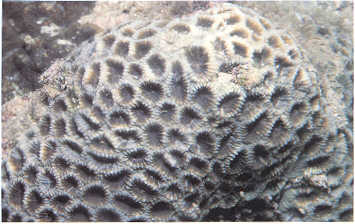
Plate 51. Knob Coral (Favia pallida).
Distinguishing Characteristics
Like all members of this genus, the calyces of this species
are slightly separated from each other, instead of sharing a common wall
as in the closely related and similar genus Favites, and
the caIycaI shape is very irregular. This species most typifies this Favia
structure. The calyces are highly variable in shape and may range
from 5 mm to over 1 cm on a single coral. Calyx rims are raised slightly
above the coral surface and septa are coarse, irregular and widely spaced.
Habitat
This is the most abundant
Favia species
and small colonies may be found in most environments from open reef slopes
in clear water to turbid lagoons and embayments.
Scientific Name Favia
speciosa
Common Name "Larger Knob Coral"
Color Pale to dark brown, or green.
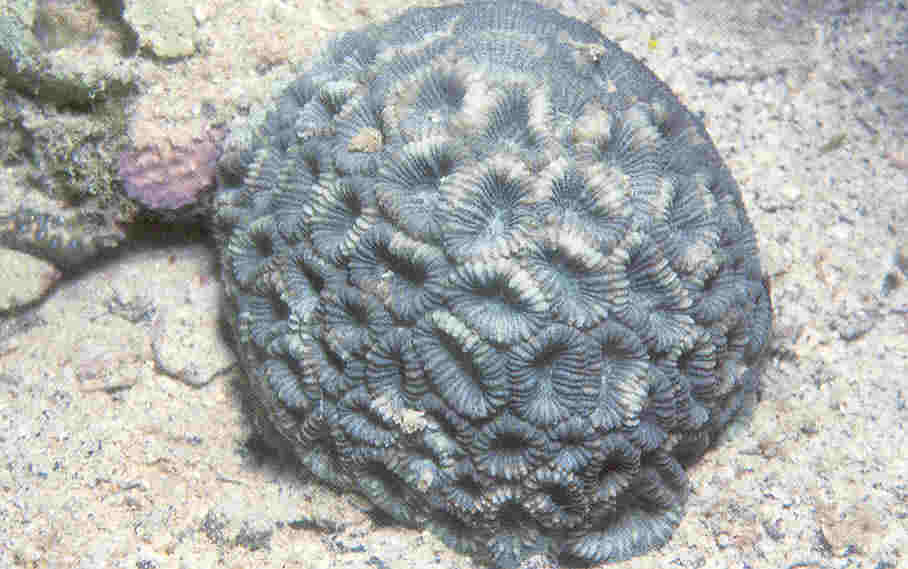
Plate 52. Larger Knob Coral (Favia speciosa).
Distinguishing Characteristics
Colonies are lobate or massive and similar to Knob Coral
except that calyces are larger, up to 15 mm in diameter, with up to 6 mm
between adjacent calyces. Also, septa are more fine and numerous
within the calyces.
Habitat
Occupies a similar range and variety of environments
as Knob Coral. but is much less abundant.
Scientific Name Favites
chinensis
Common Name "Larger Star Coral"
Color Brown to greenish or yellowish brown.
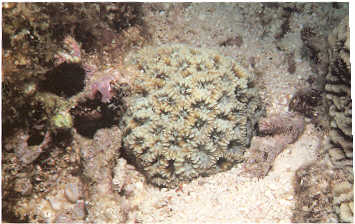
Plate 53. Larger Star Coral (Favites chinensis).
Distinguishing Characteristics
Adjacent calyces share a common wall in this species,
which clearly distinguishes this species from
Favia speciosa,
which
it may otherwise superfici.ally resemble. Calyces range from 10 to 15 mm
in diameter, are somewhat irregular in outline and their rims show a tooth-like
appearance that is caused by the incomplete development of one cycle of
septa. The growth form is primarily encrusting, but small colonies may
have a distinctly hemispherical shape.
Habitat
This is another hardy favid coral that is often found
nearshore on reef flats and other areas that may subjected to wave turbulence.
or in areas where extremes of temperature and salinity prevail which may
restrict more sensitive species.
Scientific Name Favites
pentagona
Common Name "Lesser Star Coral"
Color Brown, often with green centers.
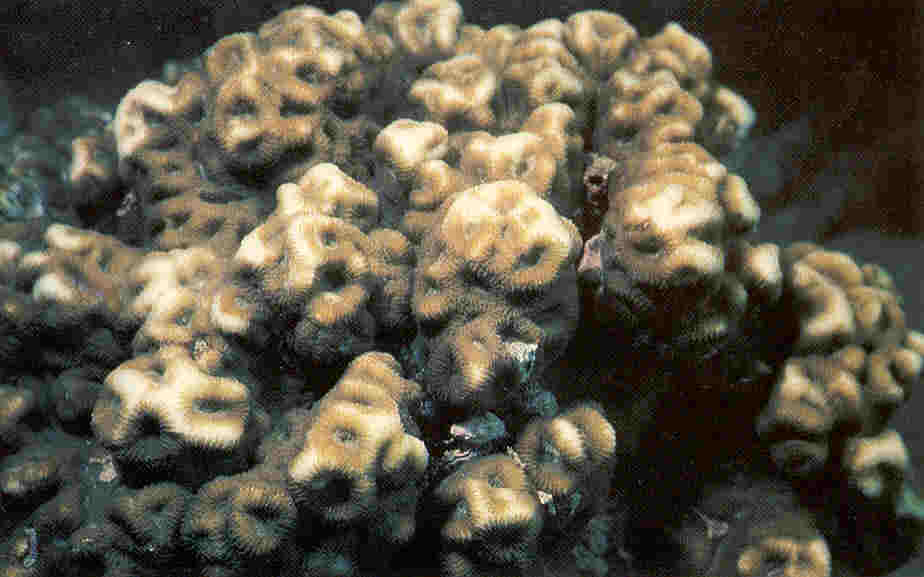
Plate 54. Lesser Star Coral (Favites pentagona).
Distinguishing Characteristics
The calyces of this species are usually less than 6 mm
in diameter, relatively small for a favid coral, and are angular in shape,
often five-sided as the species name suggests. Adjacent calyces share common
walls as. in other species of Favites and calyces are relatively
deep in relation to their diameters. The growth form can vary from encrusting
to highly irregular, with groups of calyces raised in club-like, almost
columnar, protrusions.
Habitat
This species is quite common in virtually all locations.
Colonies of this species are usually quite small, seldom reaching 1m in
longest dimension.
Scientific Name Favites
peresi
Common Name "Honeycomb Coral"
Color Yellow to yellow brown.
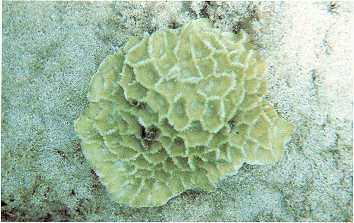
Plate 55. Honeycomb Coral (Favites peres).
Distinguishing Characteristics
This is one of the most distinct species of Favites,
having
polygonal calyces 1 to 2 cm in diameter with thin, sharp walls which quite
resemble honeycombs, especially when the polyps are yellow. The calyces
are deep, with low lying and thin septa. Colonies are usually encrusting
to lobate, but may be leaf-like.
Habitat
In Oman this species only occurs in the Dhofar region
where it is common on flats and slopes at intermediate depths with other
favid corals. It can be easily seen at Hoons Bay /Raha near
Marbat. where it is one of the more common species nearshore.
Scientific
Name Parasimplastrea simplicitexta
Common Name "Fleshy Star Coral"
Color Brown, often with green centers.
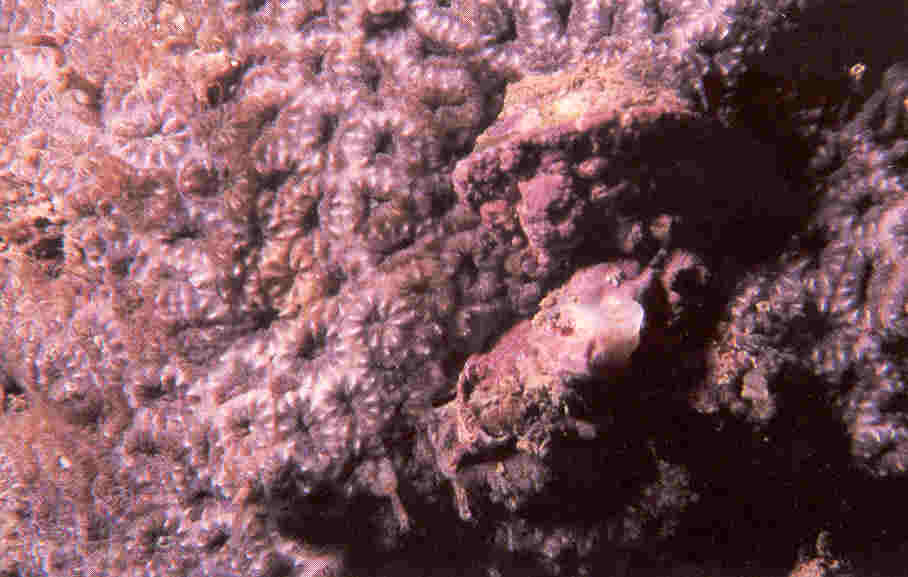
Plate 56. Fleshy Star Coral (Parasimplastrea simplicitexta).
Distinguishing Characteristics
This species is often most recognizable in the field
by its fleshy, almost furry appearance when its polyps are expanded during
the day. With polyps withdrawn or on cleaned skeletons, the coral shows
characteristics of both Favia and Favites by
having some adjacent calyces share walls while other calyces on the samecoral
may have a pronounced groove between the walls of adjacent calyces. Calycal
diameter ranges 4 to 6 mm, and this species is further distinguished from
other favid corals by having relatively few septa within the calyces. These
septa appear quite thick and robust when viewed on the cleaned skeletons.
Habitat
This coral occurs in the Muscat area on reef slopes at
intermediate depths and in up to moderately turbid conditions.
Miscellaneous
Until recently this Oman endemic species was considered
to be extinct and known only from fossil specimens described from New Guinea.
At present live specimens have only been reported from Oman, where it
is
relatively common in the Capital Area.
Scientific Name Platygyra
daedalea
Common Name "Brain Coral"
Color Pale to dark brown, sometimes with grey
or green valleys.
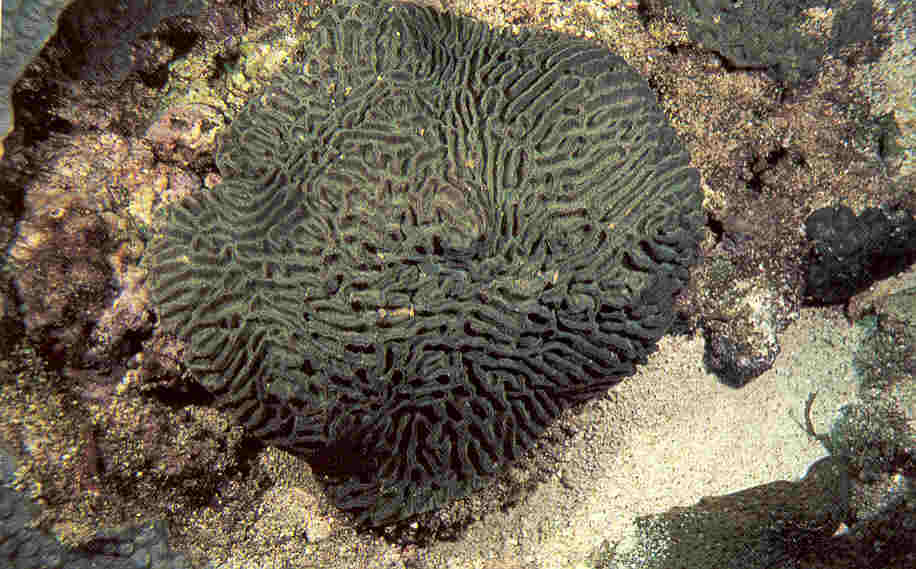
Plate 57. Brain Coral (Platygyra daedalea).
Distinguishing Characteristics
This is the common 'brain coral' on which the calyces
wind in meandering valleys over the massive skeleton, giving an external
appearance similar to a well developed brain. This configuration results
from multiple mouths forming within a single polyp and tentacle ring as
the coral grows. The width of the valley walls is about 5 mm. Coral heads
are dense and massive or encrusting, ranging in size up to a meter or more
in diameter.
Habitat
This species is common in both sheltered and relatively
turbid waters of embayments and in depths up to I5 m in exposed
offshore areas, where it shares dominance with table Acropora.
It
is highly resistant to both inshore turbidity and to offshore wave turbulence.
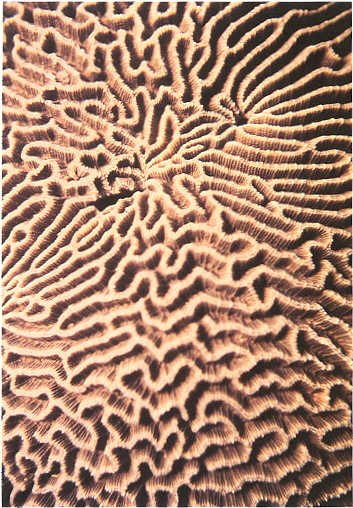
Scientific Name Leptoria
phrygia
Common Name "Lesser Brain Coral"
Color Cream to dark brown, sometimes with grey or green
alleys.
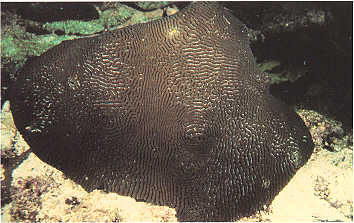
Plate 59. Lesser Brain Coral (Leptoria phrygia).
Distinguishing Characteristics
This species appears similar to brain coral in live specimens
except that the polyp valleys are usually more narrow and are very uniform
in their stucture. The valley walls may form extensive straight sections
or may meander greatly, even on the same coral colony. Inspection of the
cleaned skeleton reveals that the septa that form the brain ridges are
very evenly spaced and heavily calcified, giving a less ragged appearance
than for Platygyra. Coral colonies are massive and usually
lobate with a dense skeleton.
Habitat
The Lesser Brain Coral is found on reef slopes or flats,
in shallow waters which are exposed to moderate or strong wave turbulence.
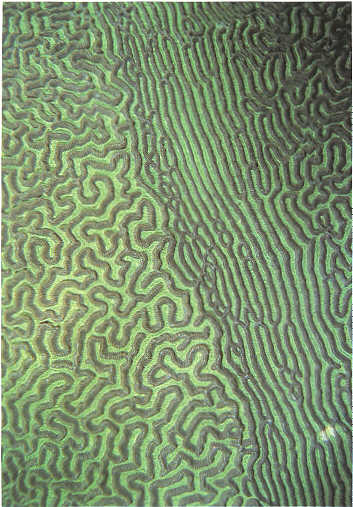
Scientific Name Plesiastrea
versipora
Common Name "Small Knob Coral"
Color Various from yellowish brown to brown or green.
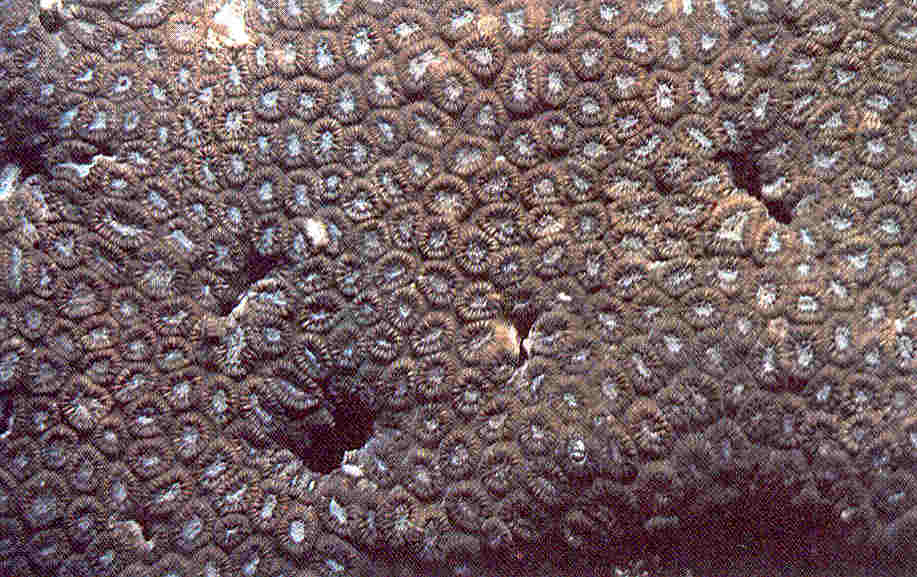
Plate 61. Close up of Smaller Knob Coral (Plesiastrea
versipora) .
Distinguishing Characteristics
Calycal diameter ranges 2 to 5 mm and the calyces are
clearly separated and slightly protruding from the coral surface. Most
calyces are circular, but some may be irregular and enlarged. Septa are
thin, and on cleaned specimens a distinct ring
is formed around
the center of the calyx by a raised area on each septum called a paliform
lobe.
Habitat
This species usually occurs as small colonies in shallow
to medium depths on reef slopes where it is a minor component of the total
coral cover. It is also seen in shallow areas protected from wave
action.
Scientific Name Leptastrea
inaequalis
Common Name "Grooved Crust Coral"
Color Brown, often with green centers.
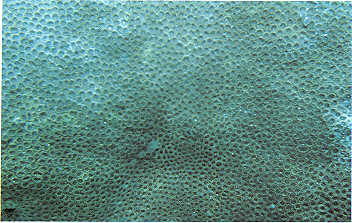
Plate 62. Grooved Crust Coral (Leptastrea inequalis).
Distinguishing Characteristics
l
Like Favites, species of Leptastrea
share common walls between adjacent calyces. However, in this species
this characteristic is somewhat disguised, since most calyces are separated
by distinct grooves surrounding each calyx. On live corals this grooved
area can appear as white between the brown polyps. Calyces are about 3
mm in diameter and usually quite round.
Habitat
This species occurs as a minor component of many reef
environments from moderately turbid embayments to moderately exposed reef
slopes.
Scientific Name Leptastrea
purpurea
Common Name "Crust Coral"
Color Brown to pale brown.
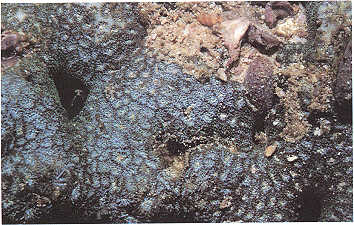
Plate 63. Crust Coral (Leptastrea purpurea)showing
partly expanded polyps.
Distinguishing Characteristics
This is the most common and widespread Leptastrea
species, occurring from the Red Sea and West African coast eastward
to Hawaii and the Marquesas Islands. Its calyces are highly irregular in
size and outline, sometimes ranging from 2 mm to more than 1cm in longest
dimension on a single coral colony. In contrast to Grooved Crust Coral
the calyces of this species are closely packed together and the upper surface
of the coral is relatively flat and smooth.
Habitat
Crust Coral is very common on exposed flats in shallow
water and is highly resistant to strong wave action and extremes of other
physical stresses. It may also extend into more sheltered deep water areas
as a minor component of the total cover.
Scientific Name
Cyphastrea
microphthalma
Common Name "Lesser Knob Coral"
Color Brown to reddish brown.
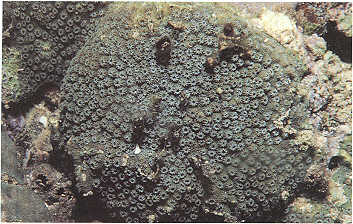
Plate 64. Lesser Knob Coral (Cyphastrea microphthalma),
showing 10 septa per calyx.
Distinguishing Characteristics
In terms of calyx size this species resembles Grooved
Crust Coral, having circular calyces with diameters of 3 mm or less.
However,
this species is clearly distinguished by the pronounced separation of its
calyces from each other and by their elevation above the surface of the
coral basal skeleton. Closer inspection reveals an even more distinct characteristic
that pertains to this species alone. The septa of each calyx are in multiples
of 10 rather than 12 as in all other corals. This attribute can be used
to separate this species from its close relative
Cyphastrea
serailia, which it closely resembles, but which has septa in multiples
of 12.
Habitat
This species is as widespread as and even more common
than crust coral and thrives under physical conditions too extreme for
many species. It is most abundant on exposed reef flats but it can extend
to the bases of reef slopes.
Scientific Name Cyphastrea
serailia
Common Name "Lesser Knob Coral"
Color Brown to reddish brown.
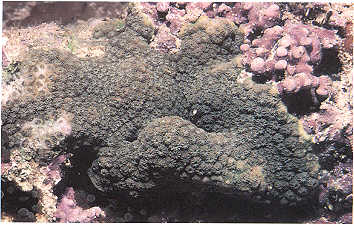
Plate 65. Lesser Knob Coral (Cyphastrea serailia)
showing 12 septa per calyx.
Distinguishing Characteristics
This species resembles in all aspects Cyphastrea
microphthalma with regards to growth form, calyx size and color.
However the two species can easily be separated on the basis of the number
of septa within the calyces. This species has 12 primary septa which can
be counted on live specimens or more easily on their cleaned skeletons.
Habitat
Same as for the previous species, with which it often
co-occurs.
Scientific Name Echinopora
gemmacea
Common Name "Hedgehog Coral"
Color Reddish to medium brown to blue-gray.
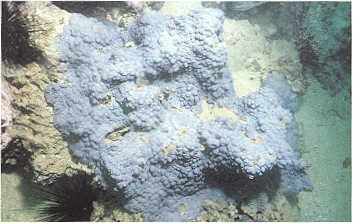
Plate 66. Hedgehog Coral (Echinopora gemmacea).
Distinguishing Characteristics
This species usually grows as encrusting plates and thick
leaves, or more rarely may have a branching growth form. Where its growth
is prolific, it may completely overgrow dead reef surfaces and live corals,
resembling a relatively smooth, almost plastic-like brown surface that
covers and follows the contours of tens of square meters of reef. Its calyces
are up to 7 mm in diameter, protrude prominently from the coral surface,
are moderately spiny, and are closely spaced together.
Habitat
This species is very common and achieves largest sizes
in moderately exposed offshor,e waters with high clarity down to 30 m depth.
However, it may also occur in more turbid shallow embayments.
Scientific Name Echinopora
lamellosa
Common Name "Leafy Hedgehog Coral"
Color Reddish to medium brown to blue-gray.
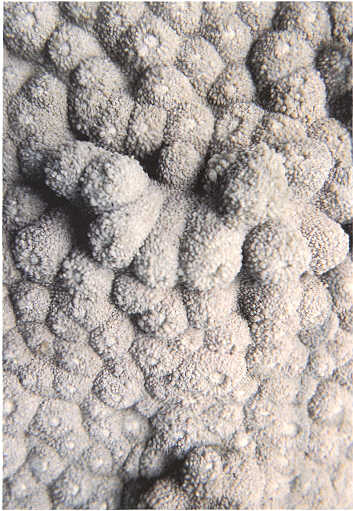
Plate 67. Close up of Hedgehog Coral (Echinopora
gemmacea).
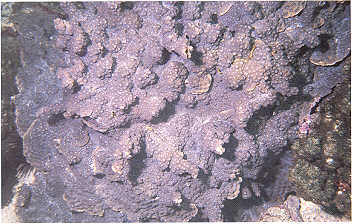
Plate 68. Leafy Hedgehog Coral (Echinopora lamellosa)
growing over an large area of reef.
Distinguishing Characteristics
This species is in many respects similar to its close
relative the Hedgehog Coral in the appearance of its calyces, color, growth
form and occurrence. However it can be distinguished in the field by the
fact that it usually grows in thin sheets with free edges rather than heavier
plates or encrustations. Its calyces are slightly smaller. less protruding
and spaced at least a calyx diameter apart on the corals surface.
Like Hedgehog Coral its unrestricted growth also covers over large areas
of reef and presents an even smoother, more plastic-like appearance.
Habitat
This species shapes a srmilar habitat to the Hedgelog
Coral, with which it often co-occurs.
Family Dendrophylliidae
Scientific Name
Turbinaria
mesenterina
Common Name "Vase Coral"
Color Pale to yellowish brown or greenish brown.
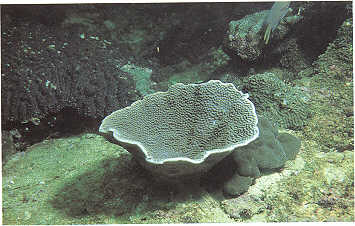
Plate 69. Vase Coral (Turbinaria mesenterina)
Distinguishing Characteristics
Small colonies of this distinctive species look
like small plates on stalks which are attached to the substratum.
As a colony grows it becomes more and more vase-like, with a thin lip around
a central depression. The lip of the vase can be quite convoluted and the
overall structure is often very beautiful. Colonies can form large vases
standing up to 1 m above the substratum, to which they are always firmly
attached to resist wave turbulence. Polyps on the interior of the vase
are uniformly about 2 mm in diameter and are evenly spaced on the coral's
surface.
Habitat
The Vase Coral is usually found at. the base or lower
sections of slopes and in relatively turbid water subject to sedimentation.
Because of its high density and firm attachment to the substratum, it is
often seen in wave exposed, turbid areas where other species are mostly
excluded .
Scientific Name Turbinaria
peltata
Common Name "Disk Coral"
Color Pale to yellowish brown or greenish brown.
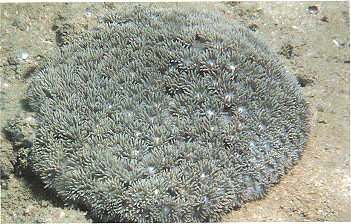
Plate 70. Disk Coral (Turbinaria peltata)with
expanded polyps.
Distinguishing Characteristics
This is the second most common of the three Turbinaria
species found in Oman, but it is far less abundant than vase coral.
with which it usually co-occurs. Instead of a vase-like appearance the
coral grows as a flat, thick disk which seldom exceeds 10 cm diameter.
Calyces on the disk's upper surface are larger than for vase coral. averaging
5 mm diameter, are evenly spaced. and often show expanded or partly expanded
polyps during the day.
Habitat
The Disk Coral is found with Vase Coral in flat areas
greater than 8 m depth where turbidity is relatively high and loose sediments
abundant. Unusually large specimens up to 0.5 m diameter occur in water
3 to 5 m deep along the cliff headland at Qurm in the Capital Area. .
Scientific Name Heteropsammia
cochlea and Psammoseris
sp.
Common Name "Shoe Corals"
Color Brown or reddish brown with pale septa.
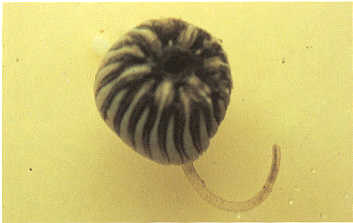
Distinguishing Characteristics
Both species are small solitary corals in which the diameter
and height of the coral is only 1 cm or less. Heteropsammia tends
to bud into two polyps and its corallites are generally taller than broad,
while Psammoseris does not bud and is more flattened. However,
the two species can only reliably be distingushed by examining the septa
of their cleaned skeletons, on which the septa of
Psammoseris fuse
laterally while those of Heteropsammia do not. It is also
difficult to distinguish these species from Heterocyathus
sp. of the Family Caryophyllidae which has a very similar structure,
habitat and life history. The primary difference lies in the larger size
of Heterocyathus, which may range up to 2.5 cm diameter,
and the property of the septa of
Heteropsammia and
Psammoseristo
fuse together in the center of the calyx (called the Pourtales Plan) which
does not apply to
Heterocyathus.
Habitat
All three corals are mostly known from their dead skeletons
which are found among shells washed up on the beach. They all live at intermediate
depths in turbid water and in sediments. where they thrive but are difficult
to recognize because of their small sizes and turbid water conditions.
They are very abundant on the sediments at 15 to 20 m depth in the area
between Fahl Island and Ras Al Hamra in the Capital Area.
Miscellaneous
These fascinating little corals share a common charactistic
of having a symbiotic association with a small invertebrate called a sipunculid
or peanut worm, which gives the corals mobility and the ability to stay
on the surface of the soft sediments in the environment where they live.
The symbiotic association begins when the larval coral settles on a small
snail shell as the first phase of the coral's adult life. As the coral
grows and its skeletal deposition nearly engulfs the shell, the peanut
worm takes up residence inside the shell and through its own activity maintains
a channel through the coral skelton to the outside. By the eversion and
retraction of its feeding proboscis into or onto the soft sediment, the
peanut worm can move the coral to a new position and keep it from being
buried.
Scientific Name Dendrophyllia
sp.
Common Name "Tree Coral"
and
Scientific Name Tubastrea sp.
Common Name "Cave Coral"
Color Red to deep purple skeletons with expanded polyps
in various colors of yellow, red green or black.
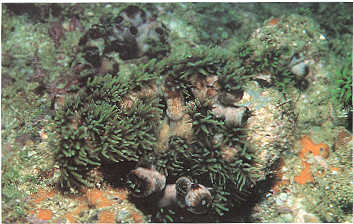
Plate 72. Tree Coral (Dendrophyllia
sp.)
with
polyps expanded and withdrawn.
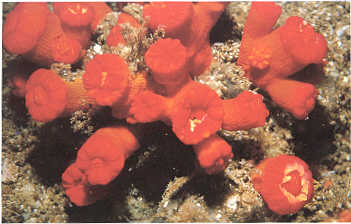
Plate 73. Cave Coral (Tubastrea sp.) with tentacles
withdrawn.
Distinguishing Characteristics
These types of coral do not contain symbiotic zooxanthellae
in their tissues, and their red to deep purple appearance is solely due
to their own pigments. Not requiring light for food energy, these corals
populate the roofs and walls of caves or under ledges where other hard
corals will not survive. They obtain their energy solely by feeding on
zooplankton, and the sight of their large, colorful polyps and tentacles
expanded for feeding can be spectacular. They grow as either solitary or
small branching forms and therefore are not reef-forming, and their skeletons
are light and porous. Members of these and related groups can occur in
very deep and cold water throughout the world, unlike the reef-forming
corals which are primarily restricted to the tropics in warm sunlit water.
Species of Dendrophyllia are often differentiated from Tubastrea in the field on the basis of the smaller size of their calyces and by a greater tendency for branching and forming arborescent colonies. However, these are unreliable charactersistics for accurate identification. since some Dendrophyllia grow as small clumps similar to Tubastrea. Also, both types may occur in a variety of colors. although Tubastrea is inaccurately considered to be primarily red. The two genera can be differentiated from the structure of the septa of their cleaned skeletons. In Dendrophyllia,the calyces follow the Pourtales Plan wherein the septa fuse in groups of three together at the center of the calyx. Tubastrea conversely shows no central fusion of the septa.
Habitat
Tubastrea sp. is found under conditions
of reduced or no light under ledges or in caves on or at the base of steep
slopes. It can usually be found in intermediate to deep depths, but can
occur in shallow water where right conditions are reduced.
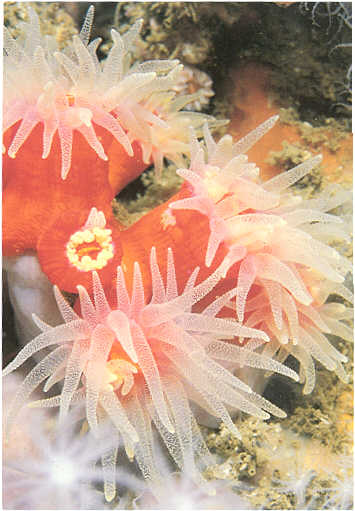
Plate 74. Cave Coral (Tubastrea
sp.) with tentacles
expanded.
Class Alcyonaria
Order Alcyonaceae
Family Alcyonidae
Two representatives of the soft coral family Alcyonidae are presented here because of their high frequency of occurrence and abundance on Oman's reefs.
Scientific Name Sinularia
cf.
polydactyla
Common Name "Leathery Soft Coral"
Color Pale to yellowish brown or greenish brown.
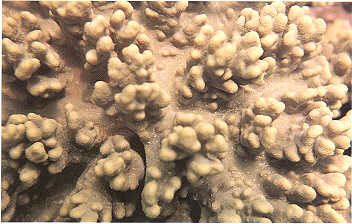
Plate 75. Leathery Soft Coral
(Sinularia cf.
polydactyla).
Distinguishing Characteristics
Sinularia cf. polydactyla
grows
as large, single species carpets which are tightly attached to large areas
of bottom and which exclude the growth of hard corals or any other benthic
organisms. Its polyps and tentacles are usually retracted, giving it a
smooth leathery surface with small, finger-like lobes and projections.
The coral is very flexible and easily torn, since support is provided only
by microscopic spicules within the soft tissue which bind the structure
together. If polyps can be found in an expanded state, they will
show the eight rayed plan of feather-Iike tentacles characteristic of alcyonarian
octocorals.
Habitat
This species is very common along open coasts and in
bays at shallow to intermendiate depths under a full range of conditions
of water turbidity.
Scientific Name Sarcophyton
trocheliophorum
Common Name "Gray-Green Soft Coral"
Color Pale to yellowish brown or greenish brown.
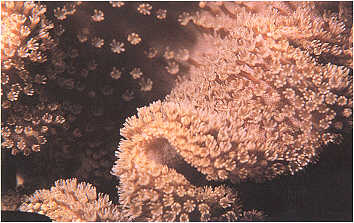
Distinguishing Characteristics
This is the second soft coral commonly occurring in Oman's
waters. It differs from Sinularia in having globular, folded,
mushroom like lobes protruding from stalks which are attached to the bottom.
Sarcophyton
is even more easily torn than Sinularia,
and
it frequently has its polyps expanded with its eight rayed tentacles easily
visible.
Habitat
Sarcophyton trocheliophorum often co-occurs
with
Sinularia,
but usually extends into greater depths up
to 10 m under all condtions of wave exposure, tubidity and bottom type.